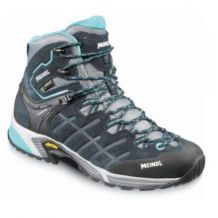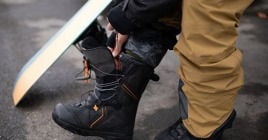How to "break in" your hiking boots?
The sun is shining, the weather's looking good, you've got your brand new pair of shoes, and you're trying them on for your first big trek. Didn't you forget anything?
Yes, you did! Your new shoes need breaking in. A few years ago, it was absolutely essential to soften the leather before using your shoes. The traditional method was to... pee in them... yes yes, you can ask your grandparents! Thank goodness times have changed. But what about modern shoes, do they need to be "broken in"? We'll answer that below.
Spoiler alert: today, it's much easier to "break in" your hiking boots than it used to be.
How can you make your hiking boots more flexible, and why is this important?
"Breaking in" your boots essentially means adjusting the shape. When you wear your new boots, the material softens and becomes more malleable. This is accelerated by the heat of your feet and the moisture produced when you walk. And that's exactly what you want to make your shoes fit your feet.
The material makes no difference whether you're wearing leather or synthetic shoes. Leather is naturally supple, which means your pair will fit your feet faster.
Having said that, we recommend that you only do this at the end of the process. When you buy a new pair of shoes, make sure they fit right the first time. If your shoes already don't fit, you can try to "break them in" as much as you like, but they won't fit. The better they fit in the beginning, the less time you'll spend trying to make them fit.
"Breaking in" your shoes, a shoe-type material
Old hiking boots were uncomfortable at first, and took a long time to get used to your feet. They were made of thick, stiff leather with little padding inside. With their very rigid construction, they could sometimes be painful at first. Thank goodness that's changed.
Nevertheless, making your own new shoes makes sense, especially with certain types such as mountain shoes, designed for high-altitude loops. A little help: the stiffer the shoe, the longer it will take to get it to fit your foot.
We don't recommend wearing a pair of crampon-compatible or high-altitude shoes straight out of the box. The heaviest shoes clearly benefit from being "broken in" little by little. Their rigid, solid construction takes longer to adapt to the shape of the foot than lighter shoes, like our light trekking boots.
However, modern hiking boots and light trekking shoes are so flexible that they can be worn straight out of the box. Even more so if you have a standard foot shape.
How long does it take to "make" your hiking boots?
The most important thing is to take your time and do things properly. Don't, for example, buy a brand-new pair just before a multi-day adventure and hike straight into the mountains. You could end up with a few blisters. Take your shoes step by step, and let your feet get used to them, before wearing them in the field. Start by wearing them in the garden, on short walks around the house or to work. Then try them out on short hikes over varied terrain.
This also helps your feet to get used to them. Walking in different weather conditions can also help. Why? Because changing from dry to wet requires extra effort on the material. Moisture can help soften leather. So if you see puddles, don't hesitate to jump in!


How can a pair of socks help?
When you "break in" your hiking boots, it's best to wear the same socks you'll be wearing on your hike. Material thickness and fiber type can make a big difference to fit and comfort.
If you feel discomfort when you're doing up your shoes, try a different pair of socks and see which type fits you best. Naturally, your socks should fit your feet perfectly. Before putting on your shoes, make sure you've put your socks on correctly, so that they fit perfectly into the shoe without creasing.
What to avoid when handling :
Peeing in your shoes: Yes, soldiers had to do it in their rangers, yes older generations probably had to do it too, but please don't try to do it. Not because, already there will be a bad smell - and hiking can be a very sociable activity - buturine also contains minerals that are dangerous for leather. It could make it dry and brittle.Lending your shoes: if you lend your shoes to a friend, they will change the shape of the shoe on their feet. Your shoes won't be the same after that. That's why borrowing shoes isn't as comfortable as having your own.
If "making" your shoes doesn't help
If you've followed the tips below, then you should go straight to making your own shoes. However, if you've got everything you need but they' re still uncomfortable, with pinching and rubbing after many tries. IF this is the case, then you need to re-test the shape of your feet, and if necessary, have them adjusted.
If your shoes are too narrow, they can be slightly widened. However, this will have an impact on the material, and the shoe may wear out more quickly. If your shoes are too big, try adding a heel pad at the back or a sole to reduce the volume and feel more comfortable.
Now you're ready to take your first steps in your new shoes. We hope you enjoy your miles of mountain hiking in them!
.jpg) |
Noé NIVAULT, Buyer at AlpinStore Practice: hiking, cycling, running, crossfit It's very important to "make" your shoes before your adventure, as explained in this article, if you really want to enjoy your hike/trek by limiting blisters and chafing which can quickly become very uncomfortable. Fatigue should come from the time you spend walking, not from the pain you feel with every step you take! |

-min-min-min.png)















